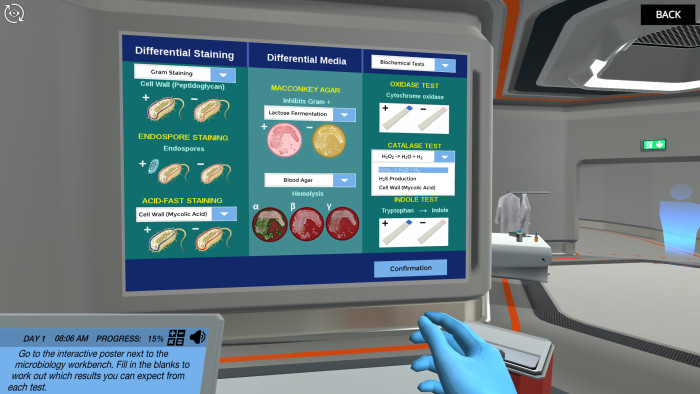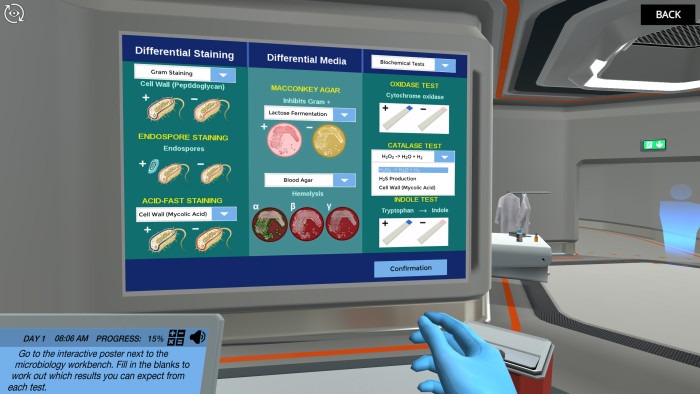
Bacteria are among the most numerous and abundant living things on Earth. They may be the simplest organisms, but they are quite diverse. Some estimates put the number of bacteria to a staggering one trillion species.
With that, identifying bacteria can be a huge challenge. There are lots of tests that can be used, each with its own set of reagents, methods, and criteria for classification. To make this topic easier to comprehend, here are five exciting methods you can use to teach this topic.
For students to identify unknown bacteria, they need to be familiar with several laboratory methods. These include aseptic techniques, differential staining, streak plating, and a lot more.
Learning about these techniques in lectures and textbooks is not the best method of learning, especially for lessons that involve lab techniques. For this topic, interactive demonstrations will work wonders.
Show students how the actual techniques work. When they see these methods in action, they will better appreciate the techniques and the importance of each step. Interactive demonstrations will also let students become familiar with the techniques before performing them.
These demonstrations will engage students better than plain lectures. With that, they can understand this topic more deeply.
Creative methods of teaching this topic can also involve games. Despite what conventional wisdom may dictate, games can actually help students learn instead of hindering them. Research has shown that gamified education provides better outcomes than traditional teaching methods.
For instance, you can organize a bacterial identification competition. Divide your students into teams and give each team the same species of bacteria. Tell them what they need to do to identify the bacteria, and the first team to correctly find it out wins.
You can also let students play lab simulations like the virtual lab from Labster, Identification of Unknown Bacteria: Help save baby Kuppelfangs from an epidemic. This simulation makes the topic exciting by turning students into explorers of an exoplanet. In the process, they will use bacterial identification techniques to save an extraterrestrial species from extinction.

Technology is your best friend in the modern classroom. Students will definitely appreciate it if you use tech-aided tools to teach this topic. You can use animations, videos, online quizzes, and interactive simulations.
Videos and animations are particularly effective, as it lets students watch the step-by-step process of bacterial identification. If any part is unclear, they can simply replay those parts as many times as they need. They can also watch the entire video or animation repeatedly. This way, they can master the concepts before embarking on real experiments.
The Labster virtual lab Identification of Unknown Bacteria: Help save baby Kuppelfangs from an epidemic is a great technological teaching aid. It makes the process of learning this topic fun and highly engaging for students.

Discover Labster's Identification of Unknown Bacteria virtual lab today!
Students are more motivated to study a topic if they know they can use it in the future. With this, you can use career options to inspire your students to learn more about this topic.
Some examples of careers you can introduce are:
You can even invite researchers, medical practitioners, and industry professionals to give career talks to your students. This way, they will discover how they can use this topic in the future.
Identification of unknown bacteria is not just a topic confined to the classroom. It also has its uses in the real world. Students will gain more interest in this topic if they see its applications.
Talk about how bacterial identification is used in medicine to diagnose diseases. The technique also helps doctors prescribe the best antibiotics for certain infections.
Environmental scientists can also use this technique to find out environmental contaminants. For instance, they can identify what bacteria are present in a water sample and find out if it’s safe to drink.
These applications will let students know the value of this topic in real life.
Teaching identification of unknown bacteria may be complicated, but you can make use of creative teaching techniques to make it easier. Use technology, interactive demonstrations, and lab simulations to make students more interested. Likewise, introducing the applications of this topic to the real world and to career paths can make it more appealing.
Try our free 30-day All Access Educator's Pass today and teach with the Identification of Unknown Bacteria simulation alongside 300+ other virtual labs!

Labster helps universities and high schools enhance student success in STEM.
Request DemoRequest a demo to discover how Labster helps high schools and universities enhance student success.
Request Demo